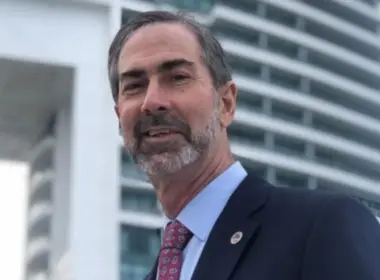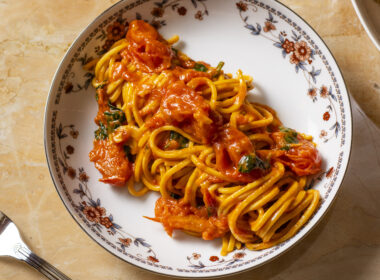Why flower importing through Miami is now a multi-billion-dollar industry
By Yousra Benkirane
Photos By Rodolfo Benitez
When you first enter USA Bouquet’s main distribution center, it seems like a normal offices space, just really big. As you explore deeper, a symphony of vibrant colors, bustling workers, and crisp air greets your senses. The vast, chilled expanse is a labyrinth of activity, as workers in bright jackets navigate the organized chaos with practiced ease. Towering shelves are lined with an array of boxes, each holding an exquisite bouquet or a bundle of freshly cut flowers. Rows of workstations dot the space, where nimble workers arrange petals and stems while forklifts glide through the aisles, loaded with crates of their delicate cargo.

In Miami, you’ll find a multitude of warehouses like this, all for flowers. The floral industry here is blooming, with Miami International Airport (MIA) responsible for 90 percent of the fresh-cut flowers coming into the U.S. market – itself, the world’s number one importer of fresh flowers. According to MIA Marketing Division Chief Jimmy Nares, the U.S. imported 409,770 tons of flowers by air in 2022 (worth some $3.3 billion), with Colombia and Ecuador alone accounting for three-quarters of this tonnage, all arriving through Miami’s airport.
How do so many flowers from these two countries enter the U.S. through MIA? The airport has 13 freighter airlines with direct service from Bogotá and Medellin, Colombia, and three passenger airlines (all carrying belly cargo) with direct service from these cities. In addition, MIA has seven freighter airlines with direct service to Quito, Ecuador, and two passenger airlines with direct service to that city

Nares also points out the other contributing factor to MIA’s success in securing a large market share of U.S. air imports of flowers (and 70 percent of all U.S. perishable imports, including fruits, vegetables, and seafood): cold chain capabilities necessary for handling and storing large volumes of such products. MIA has 466,372-square-feet of on-airport refrigerated warehouse space, approximately 16 percent of its total on-airport warehouse space, which is greater than any other U.S. airport.

“We are a product that not only is in every supermarket and mass market but is an essential product for the health and wellbeing of people,” says Christine Boldt, executive vice president for the Association of Flower Importers of Florida (AFIF). “In three and a half to four hours, we can have flowers from Bogotá, Medina, or Quito, which are the three main places of origin.”
How the floral industry was planted in Miami is something of an urban legend. According to people in the industry, in the early 1970s, a floriculture professor named Edgar Wells was studying ways to reduce the cost of producing flowers while improving their quality. In the end, the answer was geographic: He traveled to South America and found the perfect environment to grow flowers in Bogotá. Upon making that discovery, he quit the university and became a floral entrepreneur.

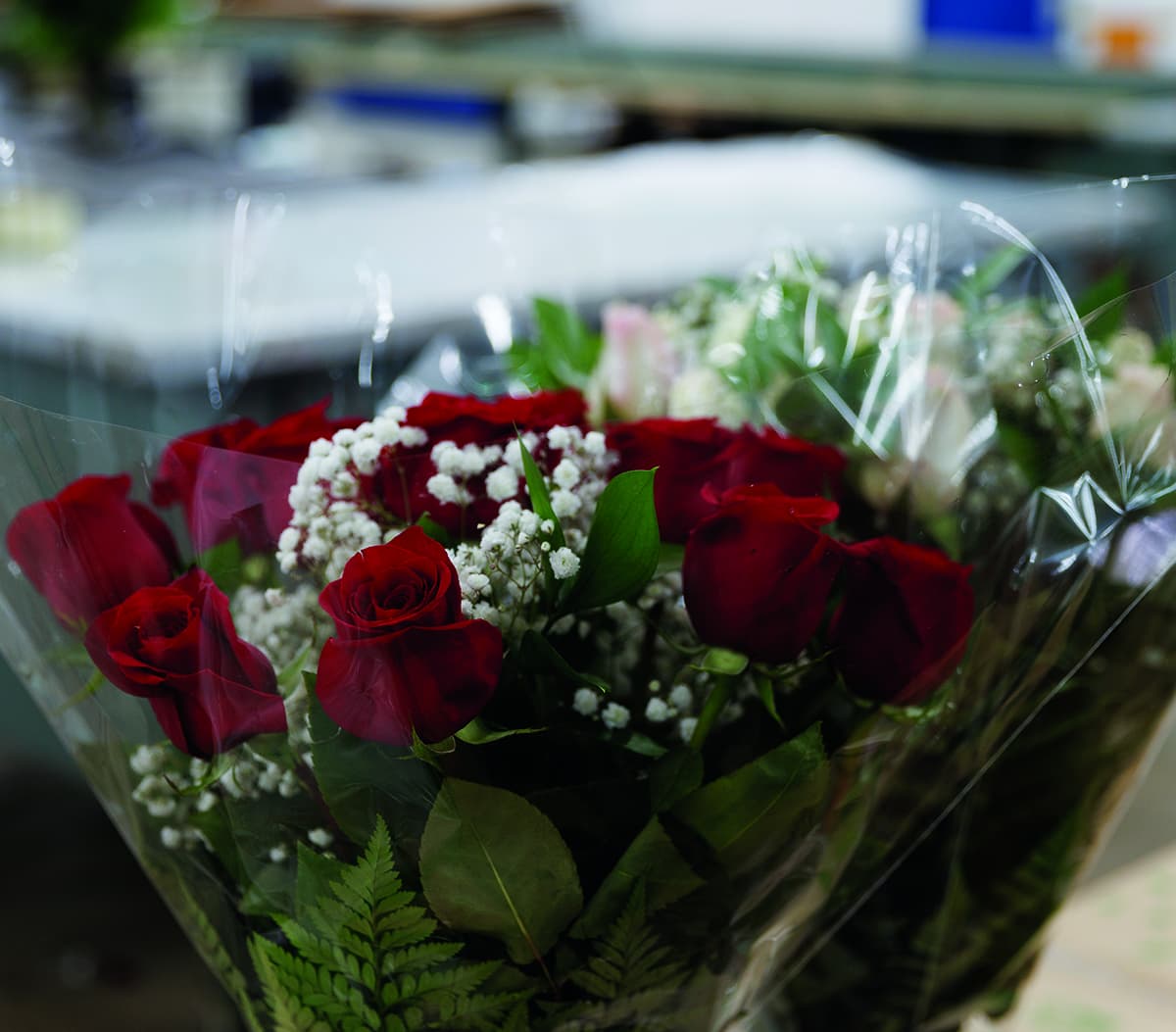


“I think there’s a misconception that we go to South America for cheap labor, which is not the case,” says Scott Hill, vice president of sales and marketing for the USA Bouquet Company. “It’s literally a prime growing area – you’re on the equator and the weather is perfect year-round. The infrastructure that you need to grow is a lot less because here [in the U.S.], you have to heat greenhouses, you have to have glass, and there are a lot of different things that make growing in the U.S. very expensive. There, we can do it with wood poles and plastic.”
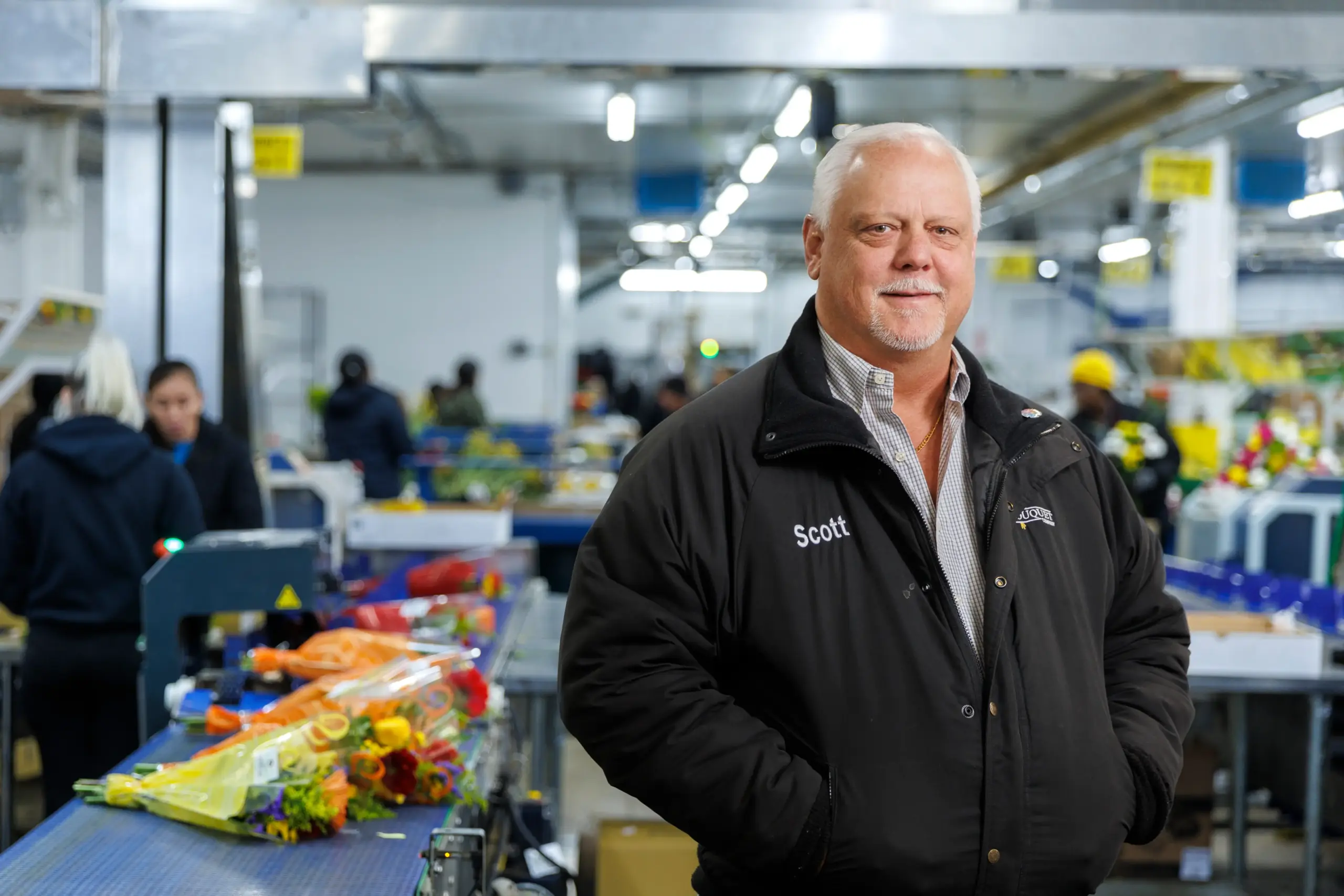
Establishing the industry in Miami was an organic progression that made sense. Once the industry turned to South America for breeding, Miami’s strategic location as the Gateway to the Americas positioned it as the primary entry point for flower distribution in the U.S. Several airlines had already established flights from Bogotá to Miami as early as the 1960s. “The airport in Miami was growing at the time, so there was a huge opportunity for more planes to come. And because the relationship between South America and Miami has been there for decades, it was kind of an easy transition,” says AFIF’s Boldt. And the industry grew. When MIA expanded its cold storage capabilities for all perishables, and later for pharmaceuticals, the industry exploded.
“When I first started at AFIF, the government only worked 8:00 to 4:30, Monday through Friday,” says Boldt. “With the volume of stuff that’s coming in today, if the government only worked 8:00 to 4:30, Monday through Friday, Miami wouldn’t be what it is. There’s no way that we can have all those perishables sit. So now, we are the only airport in the U.S. that has – 24 hours a day, seven days a week, 365 days a year – Customs and Border Protection agricultural inspections.”
For the USA Bouquet Company, a flower importer based in Miami, the floral flow never ends. They receive around 30 planeloads of cargo a day, seven days a week – which can triple during holidays. During Mother’s Day and Valentine’s Day, the industry’s busiest times of the year, importers and carriers are overloaded with shipments, often searching for additional refrigerated facilities to rent. USA Bouquet’s 114,000-square-foot Miami headquarters, located five minutes from MIA, includes 75,000 square feet of cold storage, 12 loading docks, 12 bouquet processing lines, and a conveyor system. This past Mother’s Day, the company had to rent out five additional cold storage facilities in Miami because of the high volumes they were receiving. Other importers may even ask their competitors to borrow some space. “It’s a friendly industry, and a lot of these companies grew up together,” says Hill. “But the produce industry is very cutthroat. It’s still very competitive.”
THE FLOWER CHAIN
According to experts, of all perishables, flowers are the most difficult to deal with.
The process is long and complex. The importing starts with a freight forwarder at the port of origin, with an importer in the U.S. purchasing and trying to bring the flowers into Miami or another U.S. port. Logistically, there are four different ways that flowers are imported and distributed. First, there are flower importers like USA Bouquets, who unpack, sort, and sell, either to wholesalers or large retail chains. These importers typically partner with farms and contract for all or part of their harvests. Next come the farms themselves, some of which have their own distribution centers in the U.S. Third come the wholesalers, typically in northern U.S. states, which buy directly from the farms, employ cargo companies to deliver the flowers to them, and then sell to mass markets or smaller retailers. Finally, there are the large retail chains, which usually follow a similar route of contracting directly with a farm.
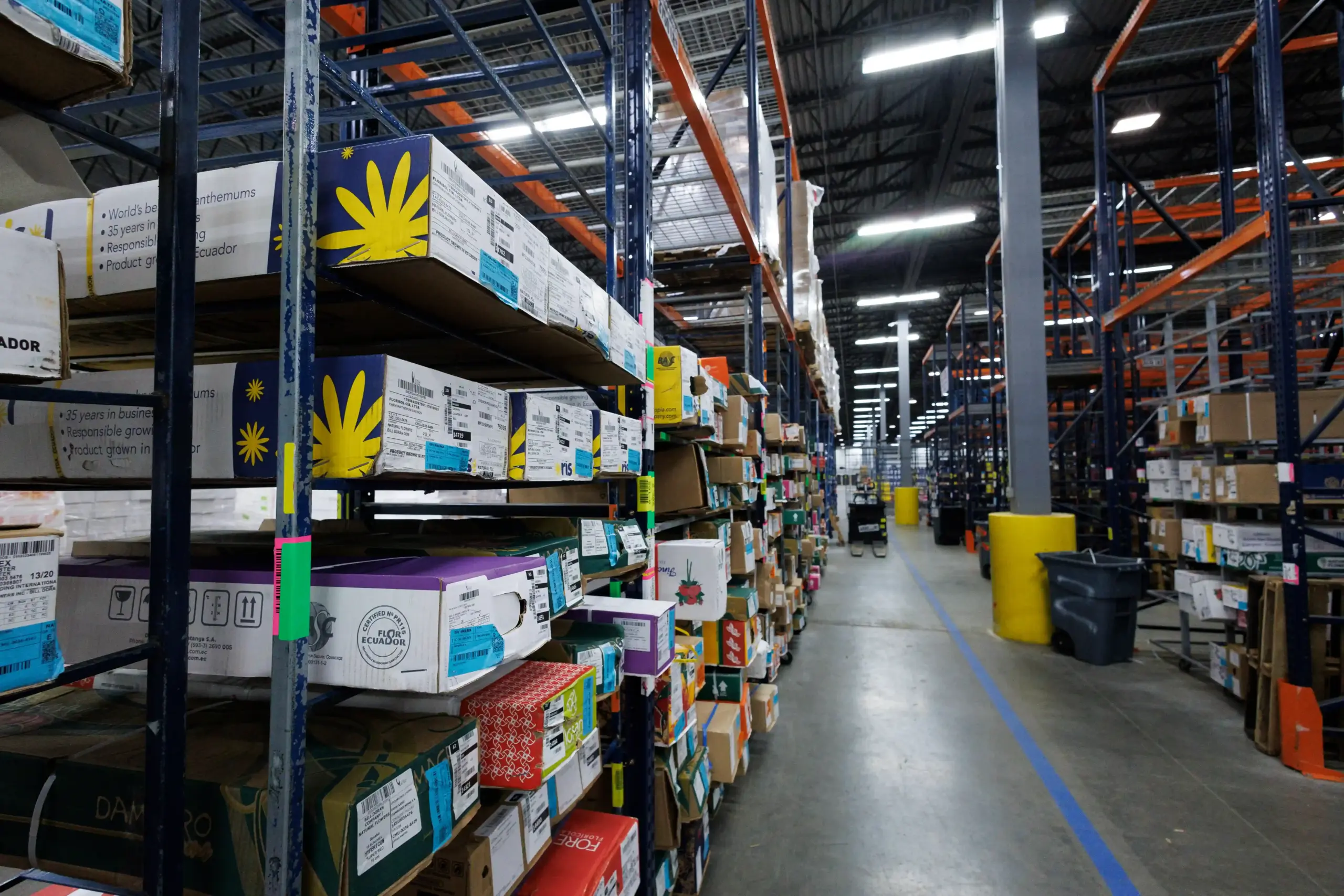
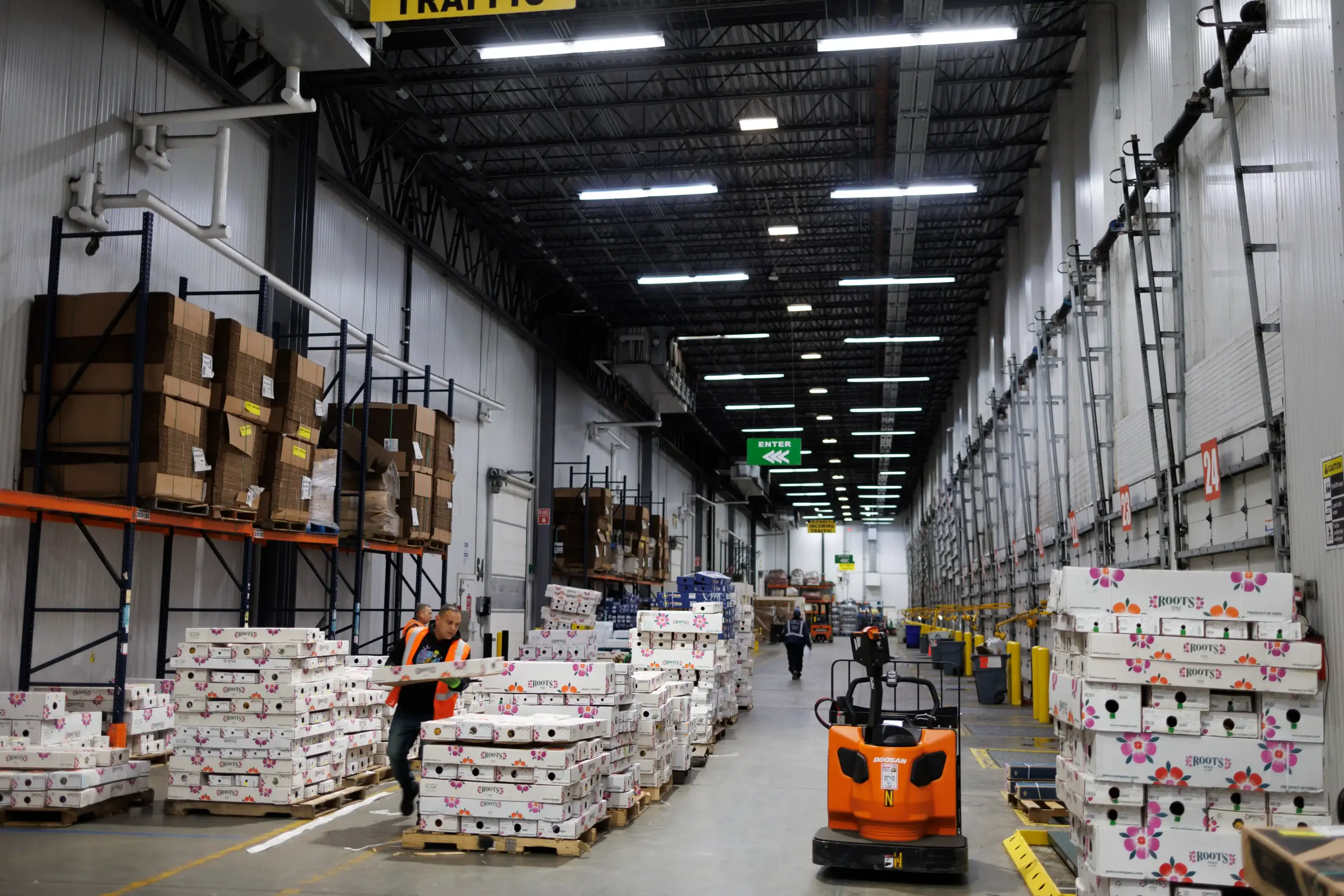
But everything starts with the freight forwarders. The importers will make a booking for their cargo with a freight forwarder, who will then organize with an airline to move the products from – for the most part – South America. Based on port of origin, destination, and type of cargo, the carrier will assign delivery times and spots. Some airlines, like SkyLease Cargo, have teams in South America that handle cargo screening and palletizing prior to loading it onto the plane. Before the flowers can be shipped, however, a series of documents must be prepared, including invoices, packing lists, phytosanitary certificates (certifying that the plants are free from pests and diseases), and certificates of origin. These documents are necessary for customs clearance both in the exporting country and the U.S. A few hours later, depending on the origin, they arrive at MIA, or in SkyLease’s case, their warehouse located at the airport.

“We control our own ramp; we are not being controlled by the Miami-Dade Aviation Department,” explains Ricardo Nieto, vice president of operations for SkyLease Cargo.
“So, when the planes land, we can park them directly at our warehouse.” Other airlines must land their planes at MIA ramps for inspections and use the airport’s cold storage warehouse facilities. “Ninety-eight percent of the time, the cargo you bring from South America is all perishables,” says Nieto, “so we always try to work the plane as close as possible to the cooler. The transition from the plane to the cooler is only two minutes per pallet. That way, we protect the cold chain.”
Unlike other carriers, SkyLease offers additional logistical services beyond the regular carrier role, including vacuum-packing salmon for direct shipment to supermarkets. SkyLease’s facilities feature a 235,000-square-foot dry cargo warehouse with 60 loading dock bay doors, but key to their perishable business is 160,000-square-feet of cold storage (maintained at 33 degrees Fahrenheit), the largest such space within an airport in North America.
Other importers keep their cold-storage warehouse facilities on private property near the airport.
Samples are taken from the shipments and inspected by Customs and Border Patrol (CBP) for any pests or illegal products. This process can take from two to 12 hours, most of which is just waiting for the officers to arrive. Once cleared, the flowers are transported to distribution centers off-site, like those of USA Bouquets’, or, in then act as hubs for further sorting, processing, and distribution to local florists, wholesalers, retailers, and, more recently, supermarkets. If things are working smoothly, the entire process of flight time and inspections at both ends should take no more than 24 hours before the flowers are on their way to wholesalers or actual points of sale.
The efficiency of the floral flow at MIA is a prime example of a successful public/private
partnership. A major contributor to the industry’s success in implementing efficient policies is the Association of Flower Importers of Florida, whose members consistently collaborate with the government to advocate for their interests. “In 1982 when the association was formed, it was formed for specific reasons,” says Boldt, who has been the executive director for 19 years. “First, to help collaborate. Yes, everyone’s a competitor, as far as selling. But for us to work with the airport, the government, and the airlines, we had to come together to try to have common goals.”
When the industry really started booming and large volumes began coming in, AFIF had to figure out a more efficient way to get the cargo released. Typically, the produce for every importer was individually inspected, so every broker would have to go to the airline and have their product shown to a customs inspector for it to get released. Seeing that planeloads of flowers were coming from the same farms, however, AFIF fought to consolidate the process.
“Why were we going to have 10 brokers come to the airport and [undergo] different inspections for the same exact farm’s carnation, just because it’s going to different importers?” says Boldt. “So, we worked with the government for years, and the government agreed.” Now, the airlines act as the broker for the entire planeload of flowers, so they can be inspected and released quickly.
Boldt also got the government to recognize flowers as an essential product during the COVID pandemic. “I immediately went to the government and said, ‘Listen, South America is not closed, the airport is still moving products, the cargo airlines are still flying, and we are anessential product [for happiness and mental well-being]… And we got an exemption.”
What has also contributed to Miami’s multi-billion dollar floral import industry is the vastly expanded U.S. market. Until about 30 years ago, there was basically only one avenue to buy fresh-cut flowers as a consumer, and that was through retail floral shops. You had the local florist handle birthdays, anniversaries, funerals, etc. Whereas now, “There are great flowers in any and every venue in the U.S.,” says Boldt. “Every supermarket, mass market, and drugstore has fresh-cut flowers. The industry has come a long way to providing an opportunity for a customer where, if you want flowers, there’s no reason for you not to have them because they’re everywhere.”
Supermarkets are now the largest buyers of fresh-cut flowers. At Publix, for example, you can easily run over after work and grab a last-minute bouquet of flowers… like the Salsa Bouquet – fresh, fun, and very Miami. And it comes from none other than USA Bouquet. Touring the facility, Hill pointed out the station that was assembling this specific product. “Those are the Salsa Bouquets from Publix. We arrange it, package it, and ship it ready to be put on shelves,” he explained as I shivered in the refrigerated cold. The bouquets even had Publix bar codes and price tags already on them.
Another emerging player has been e-retailers selling flowers online. According to a report by IBISWorld, online flower shops’ revenue has been growing 14.5 percent annually over the past five years – including a 4.7 percent increase in 2022. This year, the total value of the market is expected to reach $16.3 billion. With e-commerce, since flowers are so light, carriers charge by dimension instead of by the actual weight. This allows for importers who sell to online retailers to add more items in the boxes like a vase or some chocolate. “The key to bringing the flowers out of South America is you have to get that balance between real weight and dimensional weight. Because if you’re over on one, you’re leaving money on the table. So, if you’re paying for a five-pound box, let’s put in as much stuff as we can,” explains Hill.
Although MIA handles the majority of flower imports and other perishables, South Florida’s ports do still handle some of the flowers from South and Central America. In 2022, PortMiami imported $63.1 million of fresh-cut flowers while Port Everglades imported $15 million. While shipping by sea instead of air takes days versus hours, diminishing the flowers’ lifespan, the cost is far less. And in some cases, the industry is forced to adapt. During Hurricane Irma, airlines stopped flying, and the AFIF had to work closely with the ports of origin countries to divert flower shipments to sea instead of air. During the holidays, when airlines become overwhelmed with large volumes, importers will sometimes turn to shipping containers for sea transport as well. Before shipping containers were refrigerated, this would not have been an option. “Sea transport is never going to be the main way; we will always continue to use airlines,” says Boldt. “It just gives us another opportunity to move products.” During holidays, since the containers are refrigerated, it gives importers additional temporary cold-storage facilities.
Finding space to grow is another challenge for the industry, especially as Miami continues to expand and cold-storage becomes scarce. But solutions are in the works. According to Nares, MIA and PortMiami are working on a joint venture to benefit both ports’ perishables capabilities. The plan is to build a phytosanitary treatment and cold-chain processing facility just outside the airport. This will provide additional capacity for processing and storing perishables (including flowers) and will create new intermodal opportunities for shipping flowers once they arrive.
The other answer, of course, is just to do things at a more rapid pace. “I think we just need to work with our partners to have the product move through faster,” says Boldt. “If we can continue working with the government and have programs that can move perishable products through the airport facilities even faster than they do today, we don’t need to worry about having more storage.”
Regardless, Miami will remain a hub for importing flowers into the U.S. market. Some of its distribution centers have been around since the 1970s, and the combination of infrastructure, decades-long partnerships, and the overall convenience of the city’s location should cement its position as a pivotal gateway. “The infrastructure that the airlines have today versus what they had 25 years ago is like night and day,” says Hill. “The commitment from the airlines, the airport, the city, and the government agencies would be very difficult to duplicate, and Miami’s not going to let it go.”



